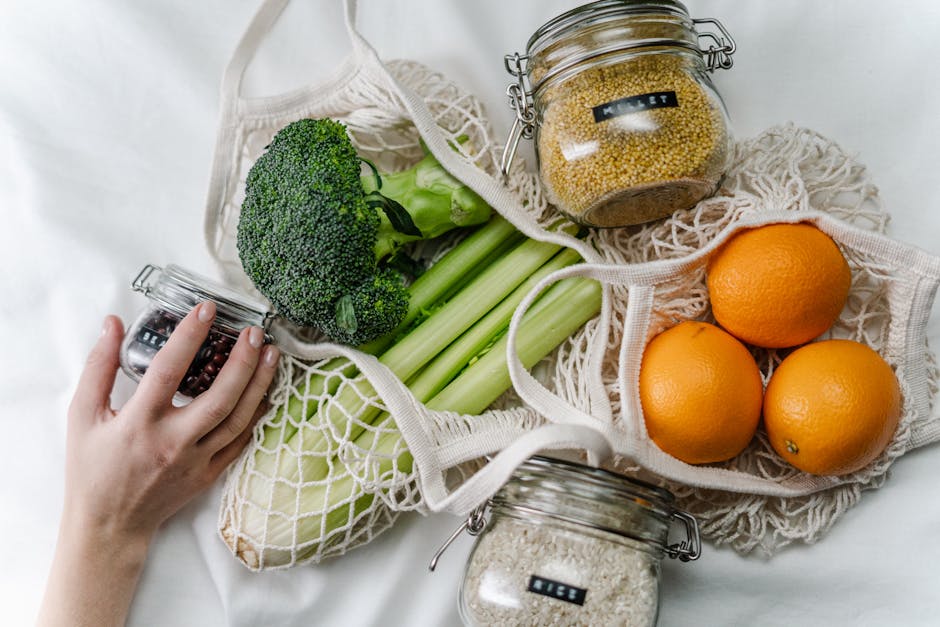10 Easy Swaps for a Zero-Waste Kitchen: Transform Your Cooking Journey
In today’s fast-paced world, the average household produces an astonishing amount of waste, especially in the kitchen. But what if you could transition to a zero-waste kitchen with just a few simple swaps? Embracing eco-friendly cooking not only helps the environment but can also enhance your culinary experience. Let’s dive into ten easy yet impactful changes you can make to create an eco-conscious kitchen that friends and family will admire.
Understanding Zero Waste: The Kitchen’s Role

The term "zero waste" might seem daunting, but it essentially promotes the idea of minimizing waste sent to landfills by rethinking how we approach consumption. Our kitchens are often one of the primary contributors to household waste due to food packaging, food scraps, and single-use items. Adopting a zero-waste mindset means being more deliberate with purchasing and using materials wisely. By implementing small, manageable changes in your kitchen, you can significantly reduce your environmental footprint and inspire those around you.
1. Upgrade Your Storage Solutions

When considering a zero-waste kitchen, one of the first swaps you can make is to replace plastic containers with glass or stainless steel alternatives. Not only are these materials more durable and long-lasting, but they also do not leach harmful chemicals into your food. With airtight glass jars or stainless steel containers, you can store leftovers and bulk ingredients securely, preventing spoilage and food waste.
Moreover, these containers are perfect for meal-prepping and organizing your pantry, allowing you to see exactly what you have on hand. Switching to reusable storage solutions can save you money and reduce your dependence on disposable bags and wraps, leading to a cleaner, more sustainable kitchen.
2. Ditch Aluminum Foil for Beeswax Wraps

If you’re still using aluminum foil to wrap food, it’s time for a change. Consider investing in beeswax wraps as they are a natural and compostable alternative. Made from cotton infused with beeswax, these wraps are pliable, reusable, and perfect for covering bowls or wrapping fruits and sandwiches.
They provide excellent air circulation while keeping food fresh, and when they eventually wear out, you can compost them. This simple swap not only reduces waste but also promotes a healthier lifestyle by ensuring you’re using chemical-free materials around your food.
3. Embrace Bulk Buying

Bulk buying has gained popularity among eco-conscious shoppers, and for good reason. Purchasing grains, spices, and snacks from bulk bins minimizes packaging waste significantly. Many grocery stores now offer refill stations, allowing you to bring your own containers to fill up on the essentials. This practice reduces single-use plastic and cardboard packaging, contributing to less landfill waste.
By planning your meals and focusing on bulk ingredients, you can save money in the long run. Plus, it encourages mindful consumption—allowing you to choose only what you truly need.
4. Choose Cloth Over Paper

While paper towels and napkins are convenient, they add to your waste pile at a rapid pace. By swapping these out for reusable cloth towels and napkins, you can significantly decrease your kitchen waste. You might think that cloth towels are a hassle to clean, but they are simple to toss into the washing machine or even wash by hand.
Decorative cloth napkins can also elevate your dining experience, making every meal feel special while contributing positively to the environment. Keep a designated basket or drawer in your kitchen for these reusable items, making it easy to grab and use when necessary.
5. Start a Compost Bin

Did you know that nearly 30% of the food produced globally ends up as waste? Starting a compost bin in your kitchen can drastically reduce that number. Composting allows you to turn food scraps—such as vegetable peels, coffee grounds, and eggshells—into nutrient-rich soil for gardening.
Set up a small compost bin on your countertop or in a designated area of your garden and educate yourself on what can and cannot be composted. Not only does composting help the environment by reducing landfill waste, but it also provides valuable nutrients to your plants and contributes to a more sustainable, circular ecosystem in your home.
6. Eliminate Single-Use Utensils and Plates

Consider the number of single-use utensils and plates used during meal-prep and gatherings. By investing in a set of reusable plates, cutlery, and cups, you significantly cut down on plastic waste generated at parties or while dining out.
If you frequently host events, borrow or rent dishware instead of purchasing disposable items. This change not only benefits the environment but enhances the overall dining experience by creating a more inviting and elegant atmosphere.
7. Buy Local and In-Season Produce

This swap may be a little more complex, as it encompasses a whole new mindset regarding where and how you shop. By choosing to buy locally sourced and in-season produce, you’re minimizing transportation emissions and supporting local farmers.
In-season fruits and vegetables are typically harvested when they’re ripe, meaning they’re fresher, tastier, and more nutrient-dense. Explore local farmers' markets and get to know the producers in your area. This not only fosters community connections but also encourages a more sustainable food system.
8. Opt for Natural Cleaning Products

Chemical-laden cleaning products are not only harmful to the environment, but they can also be detrimental to your health. Making the shift to natural cleaning alternatives reduces packaging waste and ensures you’re not contaminating your food prep surfaces with toxic substances.
Simple mixtures of vinegar, baking soda, and lemon juice can effectively tackle most kitchen cleaning tasks without damaging the environment. You can also explore eco-friendly cleaning brands that utilize sustainable practices and biodegradable ingredients, contributing to a zero-waste lifestyle.
9. Preserve Fruits and Vegetables

If you find yourself with surplus produce, consider preserving it rather than letting it spoil. Canning, pickling, or making jams can extend the shelf life of fruits and vegetables while providing delicious options for future meals. Get creative with your leftovers and find ways to use up ingredients you have on hand—think soups, stir-fries, or smoothies.
Through preservation, you reduce waste and save money by minimizing the need to purchase the same items continuously. It also empowers you to take ownership of your food, keeping track of what's available and ensuring you make the most of it.
10. Educate Yourself and Others

Finally, one of the most impactful changes you can make is to continuously educate yourself and inspire others. Read about sustainable living practices, follow eco-friendly blogs, or join online communities focused on zero waste. The more informed you are, the more confident you’ll become in adopting new strategies.
Share your journey with family and friends—start conversations about why a zero-waste kitchen matters, showcase your swaps, and how easy they are to implement. Together, you can create a ripple effect of awareness and action toward a more sustainable culinary lifestyle.
Final Thoughts
Transitioning to a zero-waste kitchen is a journey, not a destination. By embracing these ten easy swaps, you're not just crafting a sustainable cooking environment—you're fostering a lifestyle that prioritizes the planet and future generations. Each small change contributes to a bigger impact, and with every eco-friendly choice you make, you inspire others to join in.
Explore this transformative journey and enjoy the benefits of responsible living. Together, we can work toward a cleaner, greener, and healthier planet one meal at a time.



